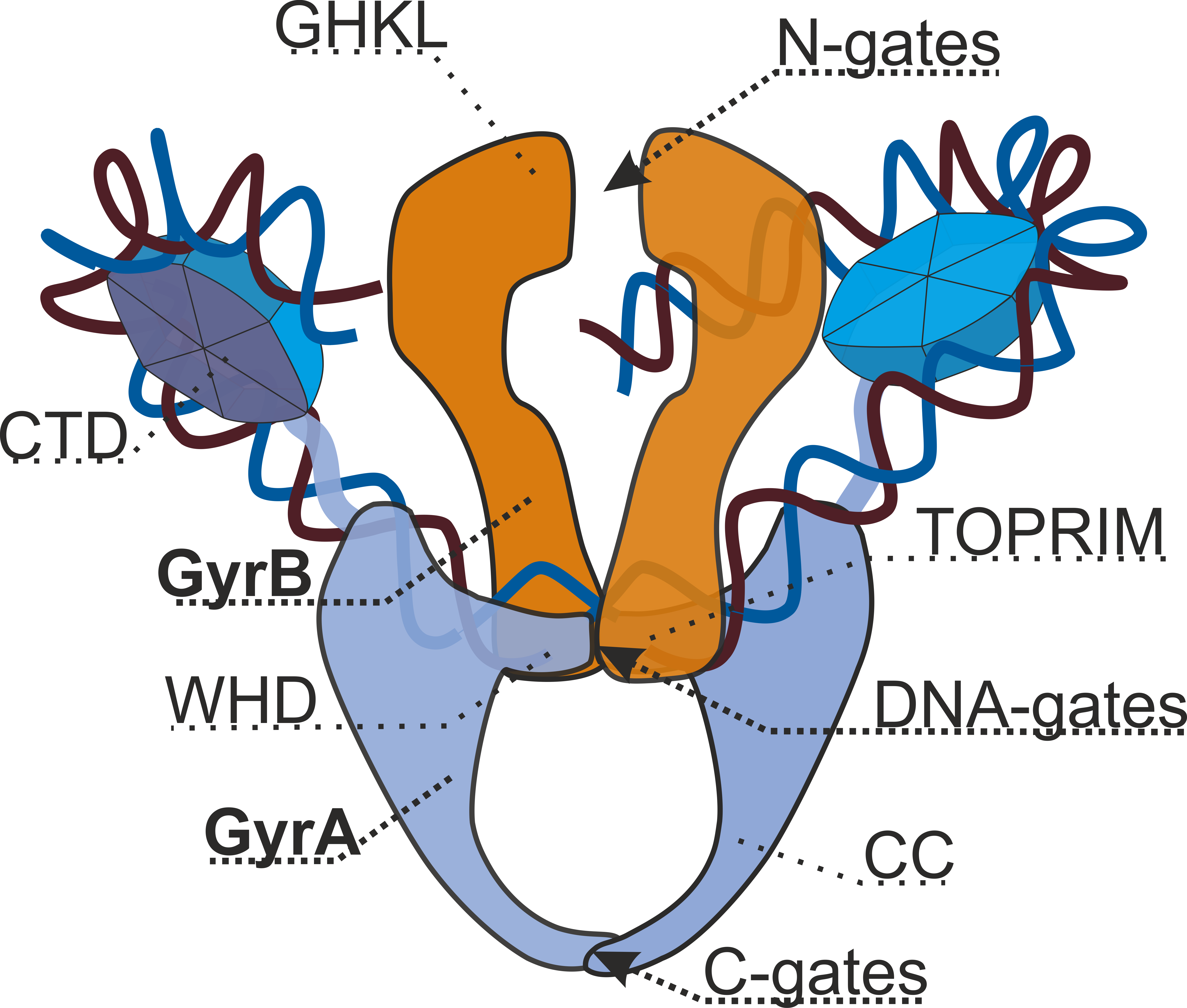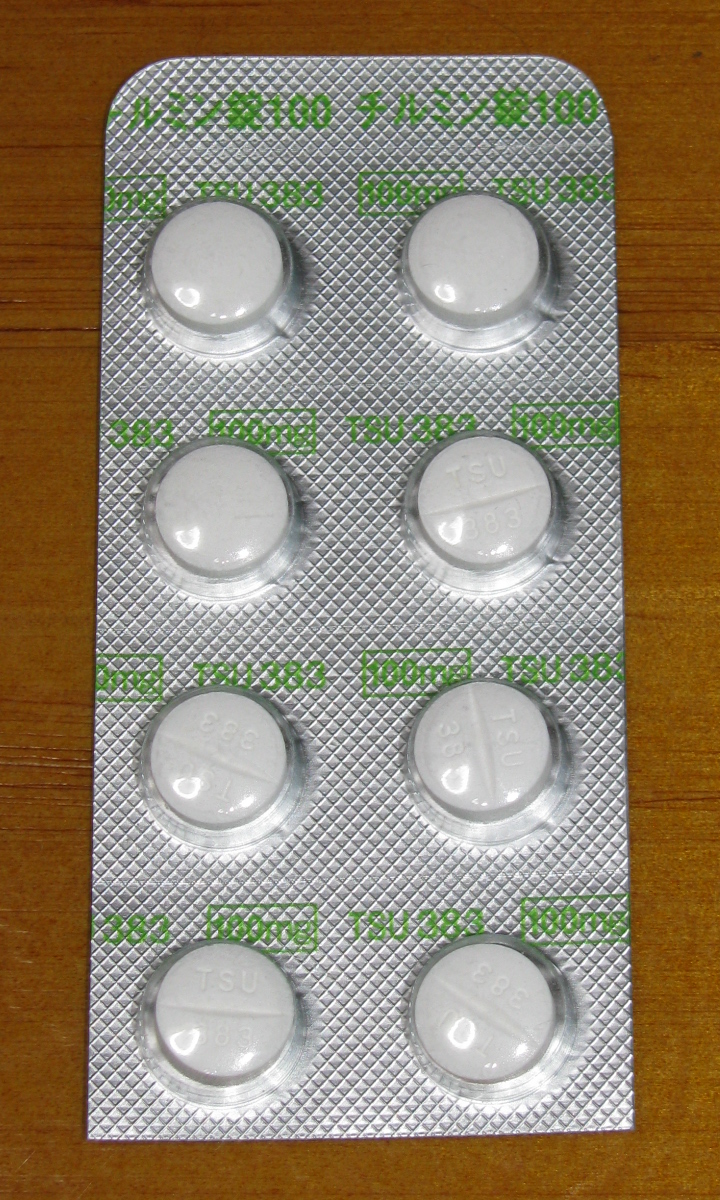|
Flumequine
Flumequine is a synthetic fluoroquinolone antibiotic used to treat bacterial infections. It is a first-generation fluoroquinolone antibacterial that has been removed from clinical use and is no longer being marketed. The marketing authorization of flumequine has been suspended throughout the EU. It kills bacteria by interfering with the enzymes that cause DNA to unwind and duplicate. Flumequine was used in veterinarian medicine for the treatment of enteric infections (all infections of the intestinal tract), as well as to treat cattle, swine, chickens, and fish, but only in a limited number of countries. It was occasionally used in France (and a few other European Countries) to treat urinary tract infections under the trade name Apurone. However this was a limited indication because only minimal serum levels were achieved. History The first quinolone used was nalidixic acid (was marketed in many countries as Negram) followed by the fluoroquinolone flumequine. The first-generation ... [...More Info...] [...Related Items...] OR: [Wikipedia] [Google] [Baidu] |
Fluoroquinolone
Quinolone antibiotics constitute a large group of broad-spectrum bacteriocidals that share a bicyclic core structure related to the substance 4-quinolone. They are used in human and veterinary medicine to treat bacterial infections, as well as in animal husbandry, specifically poultry production. Quinolone antibiotics are classified into four generations based on their spectrum of activity and chemical modifications. The first-generation quinolones, such as nalidixic acid, primarily target Gram-negative bacteria and are mainly used for urinary tract infections. Second-generation quinolones introduced fluorine atoms into their structure, creating fluoroquinolones, which significantly expanded their antibacterial activity to include some Gram-positive bacteria. Third-generation fluoroquinolones further improved Gram-positive coverage, while fourth-generation fluoroquinolones offer broad-spectrum activity, including anaerobic bacteria. Only quinolone antibiotics in generati ... [...More Info...] [...Related Items...] OR: [Wikipedia] [Google] [Baidu] |
Quinolone Antibiotic
Quinolone antibiotics constitute a large group of broad-spectrum bacteriocidals that share a bicyclic core structure related to the substance 4-quinolone. They are used in human and veterinary medicine to treat bacterial infections, as well as in animal husbandry, specifically poultry production. Quinolone antibiotics are classified into four generations based on their spectrum of activity and chemical modifications. The first-generation quinolones, such as nalidixic acid, primarily target Gram-negative bacteria and are mainly used for urinary tract infections. Second-generation quinolones introduced fluorine atoms into their structure, creating fluoroquinolones, which significantly expanded their antibacterial activity to include some Gram-positive bacteria. Third-generation fluoroquinolones further improved Gram-positive coverage, while fourth-generation fluoroquinolones offer broad-spectrum activity, including anaerobic bacteria. Only quinolone antibiotics in generat ... [...More Info...] [...Related Items...] OR: [Wikipedia] [Google] [Baidu] |
Fluoroquinolone Antibiotics
Quinolone antibiotics constitute a large group of broad-spectrum bacteriocidals that share a bicyclic core structure related to the substance 4-quinolone. They are used in human and veterinary medicine to treat bacterial infections, as well as in animal husbandry, specifically poultry production. Quinolone antibiotics are classified into four generations based on their spectrum of activity and chemical modifications. The first-generation quinolones, such as nalidixic acid, primarily target Gram-negative bacteria and are mainly used for urinary tract infections. Second-generation quinolones introduced fluorine atoms into their structure, creating fluoroquinolones, which significantly expanded their antibacterial activity to include some Gram-positive bacteria. Third-generation fluoroquinolones further improved Gram-positive coverage, while fourth-generation fluoroquinolones offer broad-spectrum activity, including anaerobic bacteria. Only quinolone antibiotics in generation ... [...More Info...] [...Related Items...] OR: [Wikipedia] [Google] [Baidu] |
Antibiotic
An antibiotic is a type of antimicrobial substance active against bacteria. It is the most important type of antibacterial agent for fighting pathogenic bacteria, bacterial infections, and antibiotic medications are widely used in the therapy, treatment and antibiotic prophylaxis, prevention of such infections. They may either bactericide, kill or bacteriostatic agent, inhibit the growth of bacteria. A limited number of antibiotics also possess antiprotozoal activity. Antibiotics are not effective against viruses such as the ones which cause the common cold or influenza. Drugs which inhibit growth of viruses are termed antiviral drugs or antivirals. Antibiotics are also not effective against fungi. Drugs which inhibit growth of fungi are called antifungal drugs. Sometimes, the term ''antibiotic''—literally "opposing life", from the Greek language, Greek roots ἀντι ''anti'', "against" and βίος ''bios'', "life"—is broadly used to refer to any substance used against ... [...More Info...] [...Related Items...] OR: [Wikipedia] [Google] [Baidu] |
Food And Drug Administration
The United States Food and Drug Administration (FDA or US FDA) is a List of United States federal agencies, federal agency of the United States Department of Health and Human Services, Department of Health and Human Services. The FDA is responsible for protecting and promoting public health through the control and supervision of food safety, tobacco products, caffeine products, dietary supplements, Prescription drug, prescription and Over-the-counter drug, over-the-counter pharmaceutical drugs (medications), vaccines, biopharmaceuticals, blood transfusions, medical devices, electromagnetic radiation emitting devices (ERED), cosmetics, Animal feed, animal foods & feed and Veterinary medicine, veterinary products. The FDA's primary focus is enforcement of the Federal Food, Drug, and Cosmetic Act (FD&C). However, the agency also enforces other laws, notably Section 361 of the Public Health Service Act as well as associated regulations. Much of this regulatory-enforcement work is ... [...More Info...] [...Related Items...] OR: [Wikipedia] [Google] [Baidu] |
Gram-positive
In bacteriology, gram-positive bacteria are bacteria that give a positive result in the Gram stain test, which is traditionally used to quickly classify bacteria into two broad categories according to their type of cell wall. The Gram stain is used by microbiologists to place bacteria into two main categories, gram-positive (+) and gram-negative bacteria, gram-negative (−). Gram-positive bacteria have a thick layer of peptidoglycan within the cell wall, and gram-negative bacteria have a thin layer of peptidoglycan. Gram-positive bacteria retain the crystal violet stain used in the test, resulting in a purple color when observed through an optical microscope. The thick layer of peptidoglycan in the bacterial cell wall retains the Stain (biology), stain after it has been fixed in place by iodine. During the decolorization step, the decolorizer removes crystal violet from all other cells. Conversely, gram-negative bacteria cannot retain the violet stain after the decolorization ... [...More Info...] [...Related Items...] OR: [Wikipedia] [Google] [Baidu] |
Gram-negative
Gram-negative bacteria are bacteria that, unlike gram-positive bacteria, do not retain the crystal violet stain used in the Gram staining method of bacterial differentiation. Their defining characteristic is that their cell envelope consists of a thin peptidoglycan cell wall sandwiched between an inner ( cytoplasmic) membrane and an outer membrane. These bacteria are found in all environments that support life on Earth. Within this category, notable species include the model organism '' Escherichia coli'', along with various pathogenic bacteria, such as '' Pseudomonas aeruginosa'', '' Chlamydia trachomatis'', and '' Yersinia pestis''. They pose significant challenges in the medical field due to their outer membrane, which acts as a protective barrier against numerous antibiotics (including penicillin), detergents that would normally damage the inner cell membrane, and the antimicrobial enzyme lysozyme produced by animals as part of their innate immune system. Furthe ... [...More Info...] [...Related Items...] OR: [Wikipedia] [Google] [Baidu] |
DNA Gyrase
DNA gyrase, or simply gyrase, is an enzyme within the class of topoisomerase and is a subclass of Type II topoisomerases that reduces topological strain in an ATP dependent manner while double-stranded DNA is being unwound by elongating RNA-polymerase or by helicase in front of the progressing replication fork. It is the only known enzyme to actively contribute negative supercoiling to DNA, while it also is capable of relaxing positive supercoils. It does so by looping the template to form a crossing, then cutting one of the double helices and passing the other through it before releasing the break, changing the linking number by two in each enzymatic step. This process occurs in bacteria, whose single circular DNA is cut by DNA gyrase and the two ends are then twisted around each other to form supercoils. Gyrase is also found in eukaryotic plastids: it has been found in the apicoplast of the malarial parasite ''Plasmodium falciparum'' and in chloroplasts of several plants. ... [...More Info...] [...Related Items...] OR: [Wikipedia] [Google] [Baidu] |
Topoisomerase
DNA topoisomerases (or topoisomerases) are enzymes that catalyze changes in the topological state of DNA, interconverting relaxed and supercoiled forms, linked (catenated) and unlinked species, and knotted and unknotted DNA. Topological issues in DNA arise due to the intertwined nature of its double-helical structure, which, for example, can lead to overwinding of the DNA duplex during DNA replication and transcription. If left unchanged, this torsion would eventually stop the DNA or RNA polymerases involved in these processes from continuing along the DNA helix. A second topological challenge results from the linking or tangling of DNA during replication. Left unresolved, links between replicated DNA will impede cell division. The DNA topoisomerases prevent and correct these types of topological problems. They do this by binding to DNA and cutting the sugar-phosphate backbone of either one (type I topoisomerases) or both (type II topoisomerases) of the DNA strands. This transien ... [...More Info...] [...Related Items...] OR: [Wikipedia] [Google] [Baidu] |
Theophylline
Theophylline, also known as 1,3-dimethylxanthine, is a drug that inhibits phosphodiesterase and blocks adenosine receptors. It is used to treat chronic obstructive pulmonary disease (COPD) and asthma. Its pharmacology is similar to other methylxanthine drugs (e.g., theobromine and caffeine). Trace amounts of theophylline are naturally present in tea, coffee, chocolate, yerba maté, guarana, and kola nut. The name 'theophylline' derives from "Thea"—the former genus name for tea + Legacy Greek φύλλον (phúllon, "leaf") + -ine. Medical uses The main actions of theophylline involve: * relaxing bronchial smooth muscle * increasing heart muscle contractility and efficiency (positive inotrope) * increasing heart rate (positive chronotropic) * increasing blood pressure * increasing renal blood flow * anti-inflammatory effects * central nervous system stimulatory effect, mainly on the medullary respiratory center The main therapeutic uses of theophylline are for treat ... [...More Info...] [...Related Items...] OR: [Wikipedia] [Google] [Baidu] |
Adverse Effects Of Fluoroquinolones
Adverse or adverse interest, in law, is anything that functions contrary to a party's interest. This word should not be confused with averse. The most common use of the term is "an interest, claim , or right that is against another’s interest." This occurs not only in the law; examples also pop up in accounting. Furthermore, an adverse interest is an exception to agency law. The law regarding this exception is narrowly defined, so a judge will instruct a trial jury on the specific law. A second use of the phrase is when some "witness with adverse interest means the witness is hostile. A hostile witness wants different results of the lawsuit than the party who calls them." Adverse possession A third use of the word "adverse" is "In real property, adverse interest means a person who is not the owner of the land or house owns an interest in the property." In property law, adverse possession refers to an interest in real property which is contrary to the in-fact owner of the ... [...More Info...] [...Related Items...] OR: [Wikipedia] [Google] [Baidu] |







